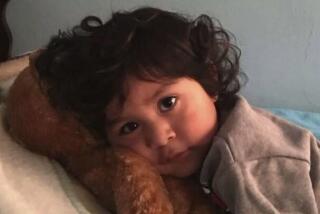Punishing California parents, unfairly
The law sounds logical, at least at first: If a parent caused a child’s death through abuse or neglect, then the other children in that parent’s care can be made court dependents, and child welfare workers can remove them from their home. Imagine a house in which a child was beaten to death, or died of starvation. It stands to reason that other children living there are at risk. The home is dangerous, and if government ever is justified in taking children from their parents, that’s when it should be done.
In application that same law can become outrageous and cruel, but still valid in the eyes of child welfare workers and the courts, as was demonstrated in a ruling Thursday by the California Supreme Court. In the case of a Los Angeles County father identified only as William C., the parental “neglect” consisted of driving his injured 18-month-old child to the hospital while a relative held her in her lap, because the certified child safety seat was in another car that someone else was using. On that day in June 2009, William had to decide — delay Valerie C.’s examination and treatment until the other car was available, or get to the hospital right away. He chose to go. On the way, another driver ran a red light and slammed into them, causing a multi-car accident. Valerie died.
That was enough, the court ruled, for officials to take away the father’s other two children under the California law dealing with child death and its consequences.
The actions of the social workers compounded a tragic accident with new, needless traumas for William, and the court’s decision opens the way for government officials to meddle, inappropriately, with the existing rights of generally responsible mothers and fathers. Yes, parents should use the proper car seats for their children. But the circumstances were exigent, were they not? And had there been no accident, or if there had been but Valerie wasn’t killed in it, authorities would have been unable to take the surviving children under the statute in question. Nor would there have been any need to, absent any evidence that the other children were being subjected to similar neglect.
The justices rejected William’s arguments that the law could be used in absurd ways — for example, to take away the children of a responsible mother who, years earlier as a teen driver, negligently hit and killed a child. Lawmakers didn’t have such odd circumstances in mind when they adopted the statute, the court said. But it’s difficult to believe that they had William’s and Valerie’s situation in mind either.
If William had made a different choice three years ago, it is not unreasonable to speculate that Valerie’s condition could have deteriorated — and that William could have been charged with neglect. When the law confronts a parent with the possibility of losing his children regardless of the choice he makes, perhaps the problem is not with the parent but with the law.
More to Read
A cure for the common opinion
Get thought-provoking perspectives with our weekly newsletter.
You may occasionally receive promotional content from the Los Angeles Times.










